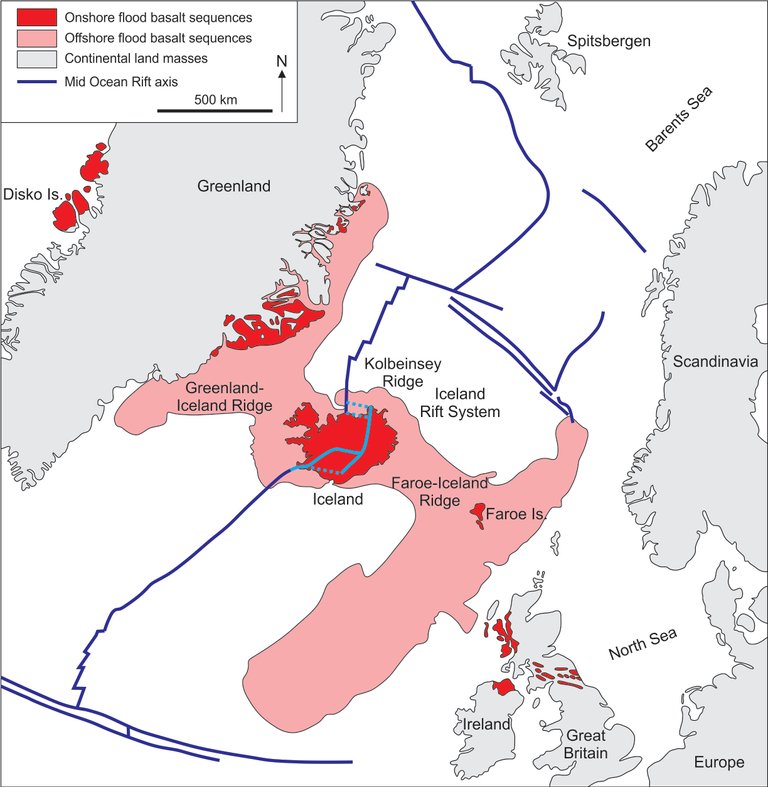Motivation for this series
I have been talking about Hawai’i for a long time now and believe it is time to change to a new subject. I spend some time thinking and reading and have decided to dedicate my next series to the Geology of Iceland.
Iceland is an exceptional natural laboratory where almost all of the principal geological processes can be observed. It is labeled as:
One of the most dramatic ‘geowonderlands’ on Earth, in a class with Hawai’i and New Zealand.[1]
It is therefore an ideal place for amateurs as well as professionals to observe how Mother Nature operates.
Unusually high rates of volcanic activity and dynamic fault movements, coupled with rapid erosion and efficient transport and deposition of sediment, make Iceland a diverse environment where constructive processes outweigh destructive ones.
Large icecaps and extensive river systems rapidly grind down the volcanic pile, dispersing vast amounts of debris from the highlands to the lowlands to form thick sequences of glacial, fluvial and lacustrine sediments. Along the seashore these formations are further modified by the pounding waves of the North Atlantic, where the often spectacular landforms exhibit an intricate balance between land construction and erosion.
Introduction to the Geology of Iceland
Iceland is located in the North Atlantic Ocean between Greenland and Norway and is one of the very few places where we can directly observe the Earth’s growth process in action. The landmass of Iceland is part of a much larger entity, situated on top a meeting point of two divergent plate boundaries, the Mid-Atlantic Ridge (N-S) and the Grenland-iceland-Faeroes Ridge (E-W). This makes Iceland a part of the oceanic crust forming the floor of the Atlantic Ocean. The part that is distinguishable sticking up from the ocean floor is known as the Iceland Basalt Plateau.

Map showing the extend of the Iceland Basalt Plateau located in the middle of the North Atlantic. Emerged parts are shown in red and submerged parts are shown in pink. Blue lines represents Mid Ocean ridges.
Modified after Saunders et al. (1997)
The Plateau rises over 3000 m above the surrounding sea floor, covering an area of approximately 350 000 km2. Only a third of this area has risen above sea level. The rest forms an up to 200 m wide, gently sloping, shelf around the island. At about 400 depth, this shelf abruptly cascades into the depth of the ocean.
The Iceland Plateau is geologically very young and all of its rocks were formed within the past 25 million years and all stratigraphic successions on Iceland fall into the geological periods Teritary and Quarternary. The construction of Iceland is thought to have begun about 24 million years ago, but the oldest rocks exposed at the surface are 14-16 million years old.
The island of Iceland itself has been created seven million years ago and has been located at a boundary of major air and ocean masses. Its surface has changed radically during its brief existence. The forces of nature that constantly mold and shape the face of the Earth operate faster in Iceland than in most other places. At its location in the northern Atlantic Ocean, Iceland is exposed to extreme fluctuating climatic changes that are clearly reflected in Iceland’s rocks. The rocks are shattered by the frequent change of frost and thaw, and the wind, seas and glaciers laboriously grind down the land. The simultaneous deposition of volcanic and sedimentary rocks in alternating successions are the result of constructive and destructive geological processes that shape this incredible island. The diverse environmental changes also cause a wide range of volcanic structures, because volcanic eruptions occurred subaqueous, subaerial and subglacial. Consequently, each rock formation reflects the spectrum of internal and external processes that molded Iceland into its current shape.
Iceland is the youngest part of a much larger volcanic province that extends from Greenland to Scotland. In its entirety it is known as the North Atlantic Large Igneous Province (NALIP). Iceland is the only part of the province that is still active and the only place on Earth where the processes involved in the construction of this type of volcanic province can be observed directly.
Additionally, it provides a present day example of continent formation, as it might have been early in Earth’s history. The initiation of continent growth is likely to have been produced by volcanism similar to that found in Iceland.

References
- [1] Thordarson, T. and Höskuldsson, Á. (2014). Classic Geology in Europe 3: Iceland. Second Edition. Dunedin Academic Press Ltd, 256 pp.
- Saunders, A.D., Fitton, J.G., Kerr, A.C., Norry, M.J., Kent, R.W., 1997. The North Atlantic Igneous Province. In: Mahoney, J.J., Coffin, M.F.
(Eds.), Large Igneous Provinces: Continental, Oceanic, and Planetary Flood Volcanism. Geophys. Monogr. 100. American Geophysical Union,
Washington, DC, pp. 45–93. - Thordarson, T. and Larsen, G. (2007). Volcanism in Iceland in historical time: volcano types, eruption styles and eruptive history. Journal of Geodynamics 43, 118-152.
- Zeilinga de Boer, J. and Sanders, D.T., (2002). Volcanoes in Human History: The Far-reaching Effects of Major Eruptions. Princeton University Press, 295 pp.

Great post :D im so amazed by the topography, looks like a capital I :p
Nice work...I am excited to see another in-depth series on this volcanic island! Though now Hawai'i has a new lava flow in a neighborhood on the slopes of Kīlauea, so you might have to do another post for that series as well!
Oh yes! It is crazy what is happening in Hawai'i right now. Thanks for letting me know :)
nice im happy to see that you start a new series
So Iceland is the top of a huge mountain coming up from the sea floor. Pretty cool, looking forward to the series
You received a 80.0% upvote since you are a member of geopolis and wrote in the category of "geopolis".
To read more about us and what we do, click here.
https://steemit.com/geopolis/@geopolis/geopolis-the-community-for-global-sciences-update-4